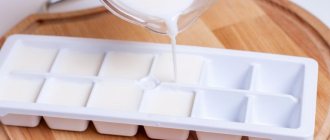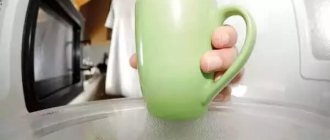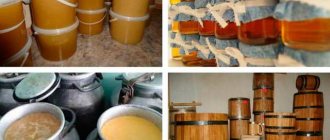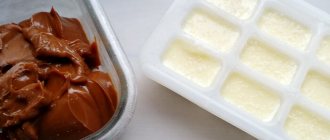Difficulties with breastfeeding may occur if
- you need to go to work, study or run errands;
- the child is premature or has diseases that prevent sucking;
- the breast is hard and full - it is difficult for the baby to suck;
- it hurts to feed because of cracked nipples;
- the mammary gland is inflamed (mastitis);
- you have been temporarily prescribed the necessary medications; they are contraindicated while breastfeeding;
In all these cases, pumping helps maintain or establish breastfeeding.
Call a breastfeeding specialist to your home
At the Group’s children’s medical centers, we know that the most convenient place for breastfeeding consultations is your own cozy home:
- A specialist will come to you at a convenient time. You don't have to go to the clinic and wait in line. Consultations can also be held directly in the maternity hospital (if visits are permissible) or in a medical center.
- A familiar home environment makes consultation easier for both mother and child.
- At home, the consultant will be able to devote more time to both the child and the parents.
- The consultant is always a phone call away: day and night (at night you can call the contact center or write to the consultant, the consultant will answer as soon as possible), on weekdays and on weekends.
- Support from a specialist is not one-time consultations, but accompaniment: the consultant will visit the mother and baby again, if necessary, after 2-4 weeks to check how feeding is going and the baby’s weight gain.
In addition to calling a breastfeeding specialist to your home, you can call doctors of the main specialties: pediatrician, surgeon, allergist, urologist, pulmonologist, hematologist, dermatologist, ophthalmologist, ENT doctor, orthopedist, gastroenterologist and osteopath. You can also take tests, perform physiotherapy and massage at home. Infant swimming consultants can advise you at home and conduct a master class.
Find out about the special offer “Comprehensive examination at home”: the convenience of this program is that you can choose from a list of pediatric doctors exactly those specialists that your child needs and an individual set of medical services with a 20% discount!
How often should I pump?
To maintain or increase lactation, express regularly. The more often you empty your breasts, the more milk you will produce. It is formed “on request”. This is regulated by 2 hormones: prolactin and oxytocin.
The first one “releases the plan” to the mammary gland for milk, depending on how much was needed last time. Oxytocin allows stored milk to flow from the breast in response to nipple traction - this is called the oxytocin reflex.
How to signal to your body how much nutrition you need to create for your child?
If you don't have enough milk, pump every hour for the first few days. Then you need to express as often as the baby would like to eat: usually every 2-3 hours. This regimen is also suitable for maintaining lactation. At night you can take a break for 4-6 hours.
How long can I use expressed milk? Look at the table. It refers to milk collected in a sterile container. Write the date of collection on the container.
How to give your baby expressed milk
One to two weeks before the “X-hour”, start introducing your baby to the bottle and pacifier. The most important thing is to choose the “right” nipple on the bottle: it is better that it has a small hole, which will prevent the baby from getting accustomed to sucking too lightly, after which he may simply refuse to take the breast. If your baby refuses to eat from a bottle, try offering him a different pacifier first (for example, replacing a round pacifier with an anatomical or orthodental one). Swap out the latex pacifier for a silicone one, or maybe your child will like the opposite. If the baby is already familiar with the pacifier, then give him a pacifier that is similar in shape.
Try to ensure that by the time you go back to work, your baby is used to at least one bottle feeding a day, and it is better if he is fed by a person who will stay with him during his mother’s absence: dad, grandmother or nanny.
How long can expressed breast milk be stored and how to store it correctly
— at room temperature for 4 hours; — in the refrigerator at a temperature of 4 ± 2°C for no more than 24 hours; — in the freezer at -18°C for 3–12 months. (optimally no more than 3 months).
Tiunova Elena
K.M.N., pediatrician of the highest category, nutritionist
“Pour out the breast milk after pumping if you were prescribed medications during breastfeeding that are contraindicated for breastfeeding.”
If you need to make your breasts softer for comfortable feeding, then you decide how much to express. How to start the process?
Recommendations for storing breast milk
Storing expressed milk: useful tips
Convenience is one of the many benefits of breastfeeding: in most cases, the milk comes directly from the milk, and there is no need to worry about collection, storage, preparation and freshness of the product.
However, for one reason or another, many mothers express and store milk for their babies: some occasionally, others every day. This article contains useful information about what expressed milk looks like and how to store it. All of the following recommendations apply to storing milk for healthy full-term infants. If your baby is in the hospital, or if you are interested in how to properly store donor milk, the list of recommendations may be different.
What does expressed milk look like?
Those who have never pumped before may be surprised to see that expressed breast milk looks very different from the usual milk from a bag. Unlike homogenized commercial cow's milk, breast milk separates into layers when allowed to sit. The fattier part floats and forms the top layer. This does not mean that the milk has spoiled: if you shake the bottle slightly, it will become homogeneous again.
Milk expressed at different times may also look different, as many factors affect its content and even color. The fat content of milk can vary from day to day, as well as during one pumping session. Milk expressed at the beginning of a feeding may appear “low-fat” compared to milk expressed towards the end of a feeding, when the milk ejection reflex causes fattier milk to flow to the nipple.
The color of human milk can also vary. Colostrum is most often yellow or yellowish-orange. The process of transition of colostrum into “mature” milk can last about two weeks. During this period, the color gradually changes and becomes bluish-white. Even the color of “mature” milk can change depending on what the mother eats and whether she takes any medications. If the mother's diet contains carbonated or fruit drinks, dessert jellies, then food coloring additives can change the color of the milk to pink or pinkish-orange. Greenish milk may mean that mom drank drinks with green dyes, ate seaweed or green vegetables in large quantities. One woman taking a certain prescription drug reported that her milk was black. Frozen milk may be yellowish in color.
Pinkish milk may also mean that blood has leaked into it. Cracked nipples are often the cause of pink milk, but blood may appear in the milk even if there are no cracks. If you think that the blood in your milk is from cracked nipples, you can contact the leader of the La Leche League. The leader will advise you how to heal them. Blood in milk will not harm the baby and you can continue to feed. If there is still blood in the milk two weeks after birth, the mother should consult a doctor.
The smell of expressed milk
Typically, fresh breast milk has a delicate, slightly sweet smell. Occasionally, defrosted milk may taste like soap, and the child does not want to drink it. In Breastfeeding: A Guide for Health Care Providers, Dr. Ruth Lawrence states that if milk is stored in the freezers of refrigerators that do not require defrosting ("self-defrosting" freezers), the fat composition of the milk may change due to the freezing and thawing cycles that constantly alternate in such freezers.
Some mothers report that their milk begins to smell like soap as soon as it is refrigerated, regardless of whether it has been frozen or not. Dr. Lawrence writes: “When mothers heated their milk very hot (but not boiling) and then quickly cooled and froze it, the soapy smell was less noticeable, and children agreed to drink the heated milk treated in this way. The above process killed lipase (an enzyme that breaks down fat) and stopped the process of fat breakdown.”
However, heating milk to such high temperatures can negatively affect levels of nutrients, one of which is ascorbic acid (vitamin C).
If, judging by the smell, the milk is sour, heating will not affect the taste or smell. If the smell seems to you that the milk has spoiled, most likely it is, and such milk should be thrown out.
How to choose a convenient container for storing milk
Milk must be expressed into a clean container. The container for long-term storage of milk must be tightly closed. The container can be either glass or plastic - there is disagreement as to what material the container for storing milk should be made of so that the beneficial substances and immune factors contained in it are preserved in the best possible way. According to the results of recent research, milk can be stored in both plastic and glass containers without compromising its quality composition. The Breastfeeding Answer Book recommends the following procedure for selecting containers for storing breast milk. In the first place are vessels made of glass, in second place are vessels made of transparent hard plastic (polycarbonate), and in third place are opaque plastic (polypropylene) vessels. If the baby only occasionally drinks expressed milk, the material from which the milk storage container is made does not matter so much, since in this case, even if the type of container has a negative effect on the composition of the milk, in total it is negligible.
Ease of use is one of the important factors when choosing a container for storing expressed milk. Plastic bags, for example, take up little space and attach directly to some breast pumps. Bags intended directly for storing milk are made of dense material. They are easily sealed and are sold already sterilized. These bags usually have a special place where you can write the date of pumping and the name of the child. Egnell bags can be ordered through the LLL catalog (item 426, $7.95). It is not recommended to use disposable polyethylene liners in bottles - they are not suitable for storing milk. The seams on these bags may burst when frozen, and the contents of the bag may leak when defrosted. If you must use these bags, pour the milk into two bags, inserting one inside the other to form a double layer of plastic for strength. Long-term storage of milk in disposable plastic bags is not recommended.
Chilled milk can be combined with another portion of cold or frozen milk, provided that the volume of milk added is small enough not to defrost the previously frozen portion. It is better to freeze small volumes (from 2 to 4 ounces - from 60 to 120 ml) so that you do not have to throw out unused defrosted milk - it is a pity to waste such a valuable product.
If your milk will be stored in the refrigerator or freezer along with milk for other children, you must label the container: indicate the date of pumping and the baby's name.
If you don't have a refrigerator at hand
If a nursing mother goes to work and wants to continue breastfeeding, even if there is no refrigerator at work, there are ways to preserve the milk expressed during the day. Research has shown that human milk has an amazing ability to inhibit the growth of bacteria, and can remain intact at room temperature for up to 10 hours after expression.
One notable study on this topic was published in 1987 in the International Journal of Childbirth Education. Mature milk was expressed into clean, but not sterile, vessels. The milk was divided into two portions: one portion was left at room temperature (19-22 C, or 66-72 F), and the other was placed in the refrigerator for 10 hours. After 10 hours, bacterial analysis was carried out on both portions. There was no statistically significant difference in bacterial levels in milk from different portions stored at different temperatures.
If you don't have an electric refrigerator nearby, you can get out of the situation by using small cooler bags with freezing elements (there are even refrigerators designed specifically for storing expressed milk) or regular thermoses. You can fill the thermos with ice before leaving the house to cool the inner chamber, and then empty the ice immediately before pouring the expressed milk into the thermos. (Translator's note: If you do not use tap water as drinking water, consider using boiled water to make ice for safety reasons).
How long can expressed breast milk be stored? The table “Recommendations for storing breast milk”, which is given at the end of the article, is compiled based on the latest research on this topic. If not you yourself, but someone else will feed your baby with your expressed milk, it makes sense to familiarize this person with this table.
It is better to store milk that you are going to give to your baby within 8 days after pumping in the refrigerator rather than in the freezer. Firstly, it does not have to be defrosted, and secondly, the immune factors contained in milk are better preserved when chilled rather than frozen. If milk will have to be stored for longer than 8 days, it is better to freeze it.
Remember that the composition of breast milk is ideally suited to the needs of the baby and its stage of development at the time the milk was expressed, and try to use the freshest portion possible.
Storing milk outside the home
A nursing mother should have the right to store milk outside the home, for example, at work, or in the refrigerator of a child in a nursery. There is no need to take any special precautions typically associated with storing bodily fluids in public areas. In an article published in 1997 in The Journal of Human Lactation, Lori Nommsen-Rivers advises that if employees complain about storing breast milk in a shared refrigerator, you can avoid unnecessary discussion by placing the container of expressed milk in an additional opaque container.
There are several sources of information for nursing working mothers that will help them not only clearly tell their colleagues about the benefits of breast milk, but also prove that storing milk in a shared refrigerator is safe for other employees.
The La Leche League's Breastfeeding Information Center issued a press release in 1995 stating: "Breast milk is not (and has never been) classified as a body fluid that may contain pathogenic substances, and storage and handling of which require specific precautions (rubber gloves, storage in a separate refrigerator for biologically hazardous substances, etc.). The US Centers for Disease Control and Prevention (CDC) and the Department of Occupational Safety and Health Administration (OSHA) continue to adhere to this view.” Nommsen-Rivers notes that other countries have laws regarding precautions when handling bodily fluids, but “we could not find any specific recommendations for breast milk.”
Recommendations for nurseries and kindergartens on the benefits and storage of breast milk were published in 1992 in the brochure "Caring For Our Children", published jointly by the American Academy of Pediatrics and the American Health Care Association with the participation of the Association of Donor Milk Banks of North America. . This publication describes the importance of breast milk for infants in nurseries and advises that caregivers should thoroughly wash their hands and follow guidelines for proper storage of breast milk for infants. Beyond this, no additional precautions were suggested for caregivers when handling breast milk.
Information on storing breast milk:
The recommendations are based on the latest research and apply to mothers
- whose children were born full-term
— who will feed expressed milk at home and not in the hospital
— who wash their hands before pumping
- who wash vessels and containers with hot soapy water and then rinse them thoroughly
Containers of breast milk intended for long-term storage must be marked with the date of expression.
Recommendations for storing breast milk
Colostrum (expressed within 6 days after birth):
12 hours at room temperature 27-32 C (80.6-89.6 F)
Mature milk
- at 15 C (59-60F) - 24 hours
- at 19-22 C (66-72 F) - 10 hours
- at 25 C (79 F) - 4-6 hours
- in the refrigerator at 0-4 C (32-39 F) - 8 days
Frozen milk
Freezer shelf inside the refrigerator, without a separate door - 2 weeks
- Freezer compartment with separate door - 3-4 months (temperature varies due to frequent door opening)
- Stationary (separate) deep freezer with a constant temperature of -19 C (0 F) - 6 months or longer.
What container to store breast milk in?
- in thick plastic or glass containers
- in special bags for storing frozen milk
- It is not recommended to freeze milk in disposable bottle bags
- Before adding a new portion to already frozen milk, it must be cooled
How to heat milk
In order to defrost or heat milk, you need to place the container under a warm stream of tap water. Do not heat the milk until it boils; shake the container before determining the temperature of the heated milk; Never heat breast milk in the microwave.
Thawed milk
Frozen milk that has been heated can be left in the refrigerator for 24 hours. This milk cannot be re-frozen.
How to stimulate milk flow faster without a baby?
- make yourself comfortable;
- think about how you are currently caring for your baby;
- while pumping, look at him or hold his clothes in front of you;
- drink a warm drink (not coffee) or take a warm shower;
- massage your nipples by rolling them between your thumb and forefinger, or gently massage your breasts;
- if you have an assistant, ask her to give you a back massage. It is carried out like this: you sit at the table and lean forward, leaning on your elbows. You lower your head. Your assistant clenches her hands into fists, leaving only her thumbs. She spends 2-3 minutes running her thumbs on either side of the spine. The movement is made from top to bottom from the neck to the shoulder blades.
If you're upset that you now have to pump, find support. This will be someone who will listen and encourage you. An upset state also interferes with the free flow of milk: take care of your good mood. In any case, you do everything in your power for the baby.
So, you felt a rush of milk. Now start expressing milk into a bottle. Follow the rules for expressing milk, and you won’t get hurt. With mastitis, unpleasant sensations are possible that are associated with the inflammation itself.
It is important!
Expressing breast milk by hand gives about the same results as using a breast pump. Which is better depends on your feelings and convenience for you.
How to improve milk expression?
To make milk easier to let out when expressing, you can use the following techniques:
- Think about your child. Bring a photo or item of clothing with your baby's scent on it.
- Warm your chest with a warm, damp compress.
- Gently massage your chest or have someone massage your back between your shoulder blades (promotes oxytocin production).
- Gently roll your nipples between your fingers.
- Imagine how the baby takes the breast and begins to suck it. Concentrate on the pleasant sensations of gentle sucking on your breast, feel the pleasant warmth filling your chest, how the warmth from your chest spreads throughout your body. Imagine how milk flows from your breasts, how good and blessed you feel. And the more the milk flows, the more pleasant it becomes, the more you relax and warm up. And the more pleasant sensations you experience, the more milk flows from your breasts.
How to express milk by hand
So, you washed your hands with soap and feel a rush. What's next:
- Sit comfortably, bring the jar closer to your chest.
- Place your thumb on top of your chest, directly above the areola.
- The index finger and the other fingers behind it are under the areola, opposite the thumb.
- Rolling your thumb and forefinger along the surface of your chest, lightly press on your chest and immediately release the pressure. You cannot rub the skin or slide on it. Press gently on your breasts: too much effort will prevent milk from coming out at all.
- Press and release. The milk comes out gradually: be patient and confident.
- Change the position of your fingers. Now place them on the sides of the areola opposite each other.
- Press and release again.
- After 5-6 minutes, when the milk flow slows down, move to the other breast.
- When you have emptied the second breast, go back to the first or now try expressing from both at once.
- If you express very little milk, you can reduce the procedure time, but do it more often.
Hand expression
The advantages of this method are the absence of pain and financial savings. Disadvantages: time consuming and small amount of milk.
Technique for expressing breast milk by hand:
- cover the areola with your thumb, the rest are under the breast;
- with your thumb, make several wave-like movements from the areola up and down;
- lightly pressing on the breast to achieve the first drops of milk;
- if pumping is carried out correctly, after the first drops a stream will splash;
- One breast is “expressed” for no more than 5 minutes.
If your breasts hurt after pumping, consult a specialist. A lactation consultant can answer any questions you may have regarding pumping.
How much milk should I have when pumping? On average about 100 ml. Before feeding, the amount is much larger. After feeding the baby - no more than 5 ml.
How to Express with a Breast Pump
Do you feel uncomfortable expressing with your hands? Use a breast pump:
- Make sure your breast pump is thoroughly washed and dried.
- Wash your hands with soap.
- Induce milk let-down using one of the methods described above.
- Place the breast into the breast pump funnel, with the nipple strictly in the center. Choose the size of the funnel according to your bust size.
- If it is a mechanical model, press down on the device that extracts the milk. In the electric model, select the desired operating mode: when you are not in pain and the milk is flowing. For optimal speed, start with the lowest power setting. Increase until the first signs of discomfort appear; after they appear, reduce the vacuum level by one notch.
- If the milk does not come out within 5 minutes, try again a little later.
- A breast pump should not be used for cracked nipples.
Preparing to drink milk after freezing
When the time comes to feed your baby frozen milk, the first question that will arise is how to reheat it properly?
To begin, milk from the freezer needs to be placed in the main chamber of the refrigerator for about 12 hours.
It is very important - after the milk has been completely thawed, it is stored in the refrigerator for no more than 24 hours!
You cannot heat milk in a microwave oven or boiling water - this will negatively affect its properties! It is best to use a bottle warmer or simply place a container of milk in a mug of warm water. The optimal temperature for heated milk is no more than 37 degrees.
Before feeding, shake the container with milk a little, as it separates during storage. But don't shake too hard, otherwise the milk will foam and your baby will swallow air bubbles along with it!
Expressed milk that has been frozen may change color and smell. Mothers often notice that it smells like soap. This is normal. If all collection and storage rules are followed, this milk is absolutely safe for your child!
Attention: used milk, which may have received flora from the child’s mouth, must be used within an hour or thrown away!
Author of the article
Types of breast pumps, their advantages and disadvantages
They are:
- Manual mechanical ones are silent, but require skill. To create a vacuum that pumps out the milk, a piston, syringe or bulb is used.
- Electric ones will do everything for you, but they will make noise during the milk extraction process. Some models also have a mode that stimulates the tide. Powered by mains and batteries.
Learning to express milk takes patience and time. WHO recommends that all new mothers learn at least how to pump manually. This way you will ensure the best nutrition for your baby under any circumstances.
Electric breast pump
An electric breast pump will be useful for mothers who often have to be away from their baby during feeding. An electric breast pump runs on a battery or mains power. Its use is more convenient and effective than manual expression or using a manual breast pump. An electric breast pump can be used on one or both breasts at the same time. Thanks to this, time for pumping is significantly saved, which may be necessary for nursing mothers who work or attend educational institutions.
All types of breast pumps must be washed with soap and water after use and left in the open air to dry naturally, which will prevent microorganisms from multiplying on them and getting into the milk.
Helpful information
Tips for storing breast milk:
- To know exactly how much milk is in the container, it is better to choose bottles with a measuring scale.
- Choose containers with a tight-fitting lid. This will avoid premature spoilage of the milk and the introduction of foreign odors into it.
- Plastic containers in which expressed milk is stored should not contain bisphenol A. This toxic component negatively affects health by damaging the endocrine system.
- When collecting milk, you must follow the rules of personal hygiene. Hands must be washed with soap.
- The storage container must be clean and dry. If there is any water left in it after washing, collect it with a paper towel.
What is the best way to store it?
After expressing, the milk is poured into a storage container. It could be:
Glass bottle .
Glass is an environmentally friendly material. The bottles are reusable and easy to clean and sterilize. The main disadvantage of packaging is that there is a risk of breaking it if handled carelessly. In addition, glass containers are more expensive than plastic ones.- Plastic container or bottle .
Plastic products are durable and practical. They are easy to care for, do not break or break. Their prices are affordable. However, purchasing plastic products always carries the risk of acquiring toxic material. Therefore, it is better to opt for products from trusted brands that produce dishes for baby food. - Sealed package . This packaging is good because it is convenient not only to store, but also to transport milk. When heated, the bags do not release toxins, and the convenient zipper closure reliably protects against leakage. Compared to containers, bags take up much less space. They are soft, so they easily take any shape. The main thing is to choose high-quality bags with well-sealed seams so that the milk does not leak out.
Each container has its own advantages and disadvantages. When choosing a suitable container, you need to take into account the main rule: it must be clean and safe for health.
Do not pour milk into medical containers for collection of tests. Their chemical safety has not been proven. Only food grade plastic is suitable for storing milk.
An overview of bags for storing breast milk is presented in this article, containers - in this one. This article will tell you how to store the product after expressing in a bottle.











